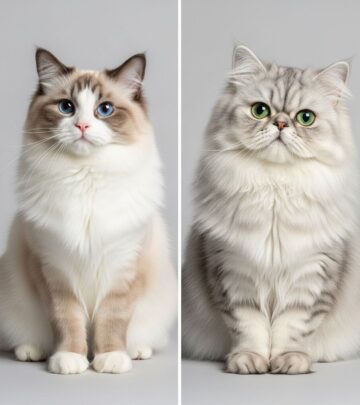How Many Birds Do Cats Kill Each Year? Shocking Statistics & Analysis
A comprehensive look at how domestic cats impact bird populations, with the latest research, numbers, and conservation debates.

How Many Birds Do Cats Kill Each Year? Statistics, Trends & Insights
Cats are beloved companions, but their hunting instincts have made them a controversial subject among conservationists and animal lovers alike. One of the most hotly debated topics is just how many birds are killed by domestic and feral cats every year. Recent research, more sophisticated tracking technologies, and conservation initiatives have all contributed to a clearer—though no less alarming—picture of cat impact on bird populations.
Table of Contents
- Key Statistics on Cat Predation
- Owned Cats vs. Unowned (Feral) Cats
- Bird Mortality Around the World
- Trends and Updated Estimates
- How Scientists Measure Bird Deaths
- Conservation Perspectives & Controversies
- Possible Solutions & Mitigation Strategies
- Frequently Asked Questions (FAQs)
Key Statistics: How Many Birds Do Cats Kill Each Year?
Research over the past decade has provided a broad range of estimates regarding cat-caused bird deaths. Recent studies offer a clearer understanding of the scale:
- United States: Cats kill an estimated 1.3 to 4.0 billion birds annually, with unowned (feral) cats responsible for about 69% of these deaths.
- Canada: Recent estimates indicate cats kill a median of 60 million birds each year, with a 95% confidence interval ranging from 19 to 197 million.
Although numbers vary by country and methodology, experts agree that cats, particularly outdoor and unowned cats, are a leading cause of anthropogenic bird mortality.
Owned Cats vs. Unowned (Feral) Cats: Who’s Responsible?
Breaking down cat-related predation involves understanding which cats are most active as hunters:
| Cat Type | % of U.S. Bird Kills | Description |
|---|---|---|
| Owned Outdoor Cats | ~31% | Domestic pets allowed outdoors, hunt sporadically, lower average predation rates |
| Unowned (Feral/Stray) Cats | ~69% | Live outdoors full-time, rely on hunting for food, higher predation rates |
The overwhelming majority of bird deaths are caused by unowned, free-ranging cats, whose daily survival depends more heavily on hunting.
Bird Mortality Around the World
- United States: Median annual estimate of 2.4 billion birds killed, with a range from 1.3 to 4.0 billion.
- Canada: Median estimate of 60 million birds per year, correcting previous, much higher, figures based on improved methodologies.
- Other Regions: Similar studies in Europe, Australia, and New Zealand have all highlighted free-ranging cats as one of the dominant non-natural causes of wildlife mortality.
International data points to outdoor cats being a serious conservation concern in most places cats are found.
Trends and Updated Estimates: Why Are Numbers Changing?
Earlier estimates often used prey-return studies, in which cat owners reported on the animals their pets brought home. However, this method significantly underestimates true kills.
- Recent studies now use animal-borne cameras, GPS trackers, and direct observation, resulting in more accurate predation rates.
- On average, cats kill 4 to 5 times more prey than they return home. For example, in some studies, cameras revealed that for every bird returned, 4.3 to 5.6 birds were actually killed and not brought home.
- Updated Canadian estimates (2024) show a 71% reduction from earlier figures, primarily due to better data on cat abundance and improved predation rate measurement, not necessarily because cats have become less lethal.
These findings illustrate the critical importance of choosing reliable methodologies for assessing wildlife impacts.
How Do Scientists Measure Cat-Caused Bird Deaths?
Determining exactly how many birds cats kill is challenging. Modern methods include:
- Prey-Return Records: Owners report number of birds their cats bring inside. Useful, but misses most kills.
- Animal-Borne Cameras: Micro-cameras attached to collars give direct evidence of kills, revealing much higher predation rates.
- Field Surveys of Cat Populations: Tracking the actual number of cats, both owned and feral, in rural and urban environments.
- Mathematical Modeling: Combining predation rates, cat densities, and proportion of hunting cats to extrapolate nationwide estimates.
These approaches have vastly improved the accuracy of bird mortality statistics attributed to cats.
Example Table: Bird Mortality Estimates by Country
| Country | Median Bird Deaths/Year | Low Estimate | High Estimate |
|---|---|---|---|
| United States | 2.4 billion | 1.3 billion | 4.0 billion |
| Canada | 60 million | 19 million | 197 million |
The Conservation Debate: Are Cats a Leading Threat to Birds?
There is consensus among most wildlife ecologists that cats pose a major, sometimes primary, threat to native birds in many regions. For instance:
- The American Bird Conservancy identifies outdoor cats as the top direct, human-caused threat to birds in the United States.
- Some groups raise concerns about the methodology of major studies, but most peer-reviewed work supports high kill estimates.
While cats are not the only threat (habitat loss, pesticides, window collisions also cause massive losses), their role in bird mortality is undeniable in many situations, especially for vulnerable or island-endemic species.
What Can Be Done? Solutions & Mitigation Strategies
- Keep Pet Cats Indoors: The most effective way to prevent pet cats from killing birds is to keep them exclusively indoors or supervised when outside (e.g., harnesses, catio enclosures).
- Trap-Neuter-Return (TNR) for Feral Cats: TNR programs can help control feral cat populations over time, though debate continues about their immediate effectiveness on reducing kills.
- Innovative Collars: Products like colorful ruffs or bells may decrease a cat’s hunting success, though studies show variable results.
- Public Awareness Campaigns: Educating cat owners and communities about the risks to wildlife can shift behaviors and reduce bird deaths.
- Wildlife-Friendly Urban Planning: Designing green spaces that discourage cats or buffer vulnerable bird areas can mitigate predation.
Frequently Asked Questions (FAQs)
Q: Are cats really the #1 threat to birds?
A: Outdoor domestic and feral cats are currently the single largest direct, human-caused source of bird mortality in the United States, responsible for billions of deaths annually.
Q: How do scientists actually know how many birds are killed by cats?
A: Scientists use a combination of owner survey data, video-collar (camera) studies, field surveys of cat populations, and modeling to estimate national kill rates. Newer camera studies have shown that actual kills far exceed those reported by owners alone.
Q: Are owned or feral cats more to blame?
A: Unowned, free-ranging cats (ferals and strays) are responsible for the majority (about 69%) of birds killed by cats in the U.S. They hunt more frequently, whereas well-fed pet cats usually hunt less and kill fewer birds overall.
Q: Do all outdoor cats hunt birds?
A: Not all cats hunt or kill birds, but the overwhelming majority will if given the opportunity, especially unowned and rural cats. Behavior varies widely between individual cats and by environment.
Q: Is keeping cats indoors the only solution?
A: While keeping pet cats indoors is by far the most effective way to reduce bird deaths, a range of solutions—including responsible pet ownership, TNR for feral cats, and public awareness—are all needed for meaningful impact.
Summary & Key Takeaways
- Cats remain a leading cause of human-related bird deaths, with the latest estimates in North America substantiating previous concerns.
- Newer methodologies, such as camera collars, have improved accuracy but also revealed the true scale of this impact.
- The overwhelming burden is carried by free-ranging, unowned cats.
- Solutions require a combination of indoor pet guidelines, population management of feral cats, and enhanced community education.
- Ongoing research will further refine estimates, but immediate action can help both wildlife and community cats coexist sustainably.
Read full bio of Sneha Tete












